Quebec, battle for a continent
| série: | Conquêtes et Découvertes |
| éditeur: | Doubleday |
| auteur: | Donaldson Gordon |
| classement: | biblio507 |
| année: | 1973 |
| format: | cartonné, avec jaquette |
| état: | TBE |
| valeur: | 15 € |
| critère: | ** |
| remarques: | English book battle for a continent, Quebec 1759 it was one of the most important battles in world history and one of the most dramatic, for 3 months, one quarter of the mighty British navy had held the St-Lawrence, isolating the French defenders; through that long hot sommer, Wolfe's English and Americans, the largest army North America had ever seen, had probed unsuccessfully at the defences that Montcalm and his troops had set up around the fortress of Quebec, the Rock, being the French stronghold that was the key to the New World CHAPTER 1 night on the river - prelude to the landing of Wolfe's troops at the cove of Foulon, very near to Quebec, the operation was supported by 141 ships (being 1/4 of the total royal navy) commanded by admiral Charles Saunders - description of the general James Wolfe and Louis-Joseph, marquis de Montcalm as well as the principal characters in the drama of Quebec CHAPTER 2 the Rock - the name Canada coming from the original Cannata (= village or settlement) in the Iroquois/Huron language as well as Quebec (in Huron = kebec = the narrowing place) which was the key to all the vital water routes of North America - Champlain founded Quebec in 1608 with 32 colonists, but in 1759 the proportion in population between the English and French colonies (Canada or New France) were 20:1, whereas the English named themselves settlers, the first French were "coureurs des bois" - the French chose the wrong Indians: Huron and Algonquin whereas the English had as allies, the fierce Iroquois, the Five Nation confederacy, they called themselves "men of men" who were the best-organized Indian empire CHAPTER 3 Braddock's chest - the city of Quebec was established 1620, was conquered by the British in 1629 and then sold again 1633 to France by Charles I for 240'000 dollars - Robert Cavalier, sieur de la Salle, discovered 1687 the country called Louisiana up to the gulf of Mexico - the fur trade was in the hand pf the mighty British Hudson's Bay Company for the English in competition with the Compagnie du Nord for the French - the Acadians were the French colonists of what is now Nova Scotia with fort Beauséjour >> p. 42 history of Acadia and exile of Acadians in 1755 - corruption was high amid French aristocrats "where rogues get rich and honest men are ruined" dixit Montcalm - at that time, Phidadelphia was the largest English speaking city after London - war between France and England became official 1756 (Seven Years war), partly due to the three mighty women: - Elizabeth, czarina of Russia - Maria Theresa, empress of Austria and - Madame de Pompadour, mistress of Louis XV together with Frederick the Great of Prussia - Montcalm was chosen as army commander for the New France, his first move was the conquest of fort Oswego (near Rome, New York) and Oswego gave Montcalm his first experience in handling Indians, next was Fort William Henry 1757 >> p. 54 the massacre at Fort William Henry CHAPTER 4 the pomp of gout (la goutte) - rise of William Pitt the Elder to replace the indolent George II, more interested in his German possessions, two parties: the Whig and the Tory, the greatest enemy was France but the French could be beaten through sea-power histrionic = theatrical, insincere >> p. 57 description of William Pitt (he was afflicted by gout) - Pitt as the leader of the war department chose two young commanders: Lord Howe and James Wolfe >> p. 59 description of James Wolfe he had been a pale, sickly boy with a severely receding chin, his mother dosed him regularly with two spoonfuls of a recipe made from green garden snails and sliced earthworms, not surprisingly, he remained sick! his passions were playing chess and flute and his only companions then were his dogs, but later on he became lovesick with a girl named Elizabeth Lawson - during the battle of Dettingen, Wolfe made his first baptism of fire and Wolfe was at that time the youngest lieutenant-colonel in the British army n.b. battle of Dettingen took place on 27.6.1743 at Dettingen on the River Main during the War of the Austrian Succession, the British forces, in alliance with those of Hanover and Hesse, defeated a French army under the duc de Noailles, George II commanded his troops in the battle and this marked the last time a British monarch personally led his troops on the field, the village of Dettingen is today the town of Karlstein am Main, northwest of Bavaria >> p. 62/63 description of the battle of Culloden, Scots against Englishmen (1746) which turned out hopeless for Charles Bonnie Prince's army n.b. the wild claymore charge was the Highlander's only tactic, the clansman guarded his left side and middle with his shield while swinging his broadsword with his right arm CHAPTER 5 a stupendous stronghold >> p. 75 description of Louisbourg at Cap Breton island on the northern tip of Nova Scotia - French great victory at Ticonderoga but the British recorded 3 winning battles 1/ Fort Frontenac 2/ destruction of a French fleet of 9 ships and conquest of Fort Duquesne CHAPTER 6 mad is he? new love affair by Wolfe for Katherine Lowther, then Wolfe was nominated major-general in charge of an expedition on the St-Laurent to seize Quebec >> p. 95 Wolfe losing his self-control - the American Rangers led by major Robert Rogers was the British counterpart of the French "coureurs des bois" >> p. 100 description of the regular British redcoats - Montcalm became supreme commander of the French army in New France but the French leadership was somehow confused with the rivality between Montcalm and Vaudreuil, governor of New France CHAPTER 7 the Traverse - the St-Laurent was a treacherous river (with mysterious currents and hidden shoals) and it was especially difficult to navigate upwards, called the Traverse - James Cook was then also part of the British expedition - the isle of Orleans, opposite of Quebec, had been abandoned by the French - Quebec was called the Rock because it was protected by practically unassailable cliffs - first landing of the British was Beaumont, on the south branch of the St-Laurent which became their principal base - one of the biggest mistakes on French side was the failure to fortify Point Levi, the promontory opposite to Quebec - p. 118 description of the Indian Tomma hawk and of the scalping knife - 8th July 1759, first encounter between Montcalm's and Wolfe's troops CHAPTER 8 hot stuff on 12th July, the bombardment of the city of Quebec with canons and mortars had begun and a tentative, made by the French with firerafts, to burn the British fleet was a failure >> p. 138 description of the grenadiers, by tradition, the tallest and finest of foot-soldiers but they were defeated in front of the cliffs at Beauport - first defeat for Wolfe who had somehow lost the confidence of his senior officers and blunted the hot stuff = spirit of his soldiers CHAPTER 9 Wolfe in despair - the blame for the defeat was given to Wolfe and now punitive raiding parties were organized, it was war of the worst shape (torture, scalping, etc) - during the summer, the British suffered mostly from scurvy, despite that, Wolfe had the best army ever seen in North America - 19.8.1759 Wolfe was on the point of dying but miraculously recovered soon after and was now organizing a further landing at the Montmorency river - this landing was again not satisfactory and by exploring the St-Laurent between Cap Rouge and Quebec, Wolfe discovered a small cove, called Anse au Foulon, 2 miles near Quebec CHAPTER 10 the back door - the two antagonists watched each other for the final battle, Montcalm hoped the British would give up as winter was soon to come but Wolfe wanted to achieve a last glorious victory - and on his landing at Anse au Foulon, Wolfe had luck this time, only 30 French sentinels (instead of the usual 100) were in place at that time (the reasons are not clear, either administrative misunderstanding between Montcalm and Vaudreuil or most probably, there had been treachery within the French army), in any case, the back door to Quebec stood open - and now Wolfe's troops were in a position to engage battle on the Abraham fields near Quebec CHAPTER 11 the inevitable hour (15.9.1759) >> p. 172 the Scottish Highlanders with kilt and claymore marched on with the pipes playing the "Lovat's March" (4441 British against 4500 French) - it was Wolfe's death but the expected glorious victory for his troops, yet the conquest of New France was to be delayed for another year CHAPTER 12 more important matters - after the battle, Townshend, the new commander did not want to risk the fruit of such a glorious day, he did not chase the defeated French, nor enter Quebec and he ordered his troops to dig in n.b. encomium = very high praise - on their side, the remaining French officers decided the army to abandon Quebec, Montcalm having died just 24 hours after Wolfe's death - and Quebec, the Rock, the impregnable fortress, defended by high practically impenetrable cliffs was conquered due to a lack of decision in the French army CHAPTER 13 the second battle - Pitt in London greatly praised Wolfe's victory, a monument was built in his honour but the British administration refused to pay any pension or other financial compensation to Wolfe's mother - and by the end of 1759, a French fleet coming to the rescue of Quebec was defeated in the Quiberon Bay, the French seapower was finished and New France was now deprived of any support by the mother country - Quebec without any defending army soon surrendered and general James Murray became the new governor of the city, however Montreal was still in the hands of De Levis, now new commander of the remaining French army - spring 1760, De Levis made an advance to Quebec and a second battle took place on the Abraham fields, this time, it was a French victory (May 1760), it was called the battle of Sainte-Foy but like in the precedent battle with the British, the French did not chase the British and failed to recapture Quebec - moreover a support British force arrived in Quebec shortly afterwards and De Levis had to retreat to Montreal CHAPTER 14 the captains depart - the last French sanctuary in Montreal was september 1760 defeated by three British conjoint forces (17'000 men), with the British arrived a great number of Mohawk indians who took revenge on the Iroquois >> p. 223 at the surrender of Montreal, the British general Amherst was however determined to squelch the French army for having tolerated free and terrible use of Indian atrocities (what has been partly been tolerated by the French and by Wolfe) - on 8.9.1760 the governor Vaudreuil accepted the surrender of Montreal and signed away half a continent (whole of Canada), - the war in North America was over, the conquest by the British of North America was complete but it would follow some years later by the birth of a new nation: the United States of America (n.b. twenty ships were needed to carry home the remnants of French rule) CHAPTER 15 new paths >> p. 230 the drama of Quebec ended with two principal dead on stage while the supporting cast of heroes and villains wandered off, some went into obscurity and some to jail, but many became principals in their own right, for they were remarkable men - Vaudreuil, Bigot and Cadet were put on trial for fraud and corruption - De Levis and Bougainville could benefit of some clemency and later on escaped the French revolution >> p. 237 within three months, George III had acquired the throne of England, the rest of North America and the whole of India, but he failed to grasp even the geography of his new possessions remarking that the Canadian forts along the Ganges would have to be demolished - and Canada was not considered as worth as many West Indian islands such as Guadeloupe being more valuable because of sugar, rum, cotton and coffee >> p. 238 the treaty of Paris was signed on February 1763 and the Seven Years War was over, Britain finally decided to keep Canada and abandon Guadeloupe, this largely for the inglorious reason that British planters feared a drop in sugar prices >> p. 240 Carleton, successor of Murray in Quebec, promoted the Quebec Act in 1774 which in effect restored the old French system while adding some English seigneurs to run it limbo = condition of being forgotten and unwanted >> quite a good book dedicated mostly to Quebec and the generals Wolfe and Montcalm with some interesting illustrations >> in that connection see he excellent serie of "les pionniers du Nouveau Monde" by Charles, édition Glénat, tomes 5 et 6 Enclosures - cover of book and map of St-Laurent river at Quebec - portraits of Wolfe and Montcalm - the landing at Anse au Foulon - death of general Wolfe - maps of North America and New France (1700 and 1745) Information a)la forteresse de Louisbourg est la reconstruction partielle d'une forteresse française située sur l'île du Cap-Breton en Nouvelle-Ecosse, à l'origine établie en 1713 en relation avec la pêche à la morue et suivant le traité d'Utrecht qui avait dépossédé la France du port et fort stratégique de Plaisance à Terre-Neuve, elle est devenue la capitale de l'Île Royale en 1718, en 1745, une force armée britannique venue de la Nouvelle-Angleterre la captura, elle fut restituée à la France par le traité d’Aix-la-Chapelle en 1748 en 1757, une expédition commandée par Sir Francis Holburne, comprenant 16 vaisseaux de ligne et 4 frégates arrive pour attaquer Louisbourg, devant des forces françaises supérieures, Holborne quitte la région de Louisbourg à la fin de septembre en 1758, une autre expédition britannique sous les ordres du général Jeffrey Amherst commença le siège de la forteresse le 8 juin, les britanniques avaient 39 navires avec environ 14 000 hommes plus une force de débarquement de 12 870 hommes, la forteresse était défendue par 10 vaisseaux avec 3 870 hommes et une garnison de 3 920 soldats, la reddition intervint le 26 juillet, les britanniques eurent 200 morts et 360 blessés, alors que les Français eurent 410 morts et environ 400 blessés, les britanniques firent 5 640 prisonniers, deux ans plus tard, la forteresse est détruite par des ingénieurs militaires britanniques b) general James Wolfe (1727-1759) lors de la guerre de Sept Ans, à la tête de la force expéditionnaire britannique, il remporta la bataille des Plaines d'Abraham en 1759 qui entraina la chute de la ville de Québec et précipita la perte par le Royaume de France de la colonie française du Canada, il est mortellement blessé au cours de cette bataille, il se fit remarquer par les nombreuses exactions qu'il ordonna contre les colons français de la vallée du Saint-Laurent (meurtres, viols, incendies de maisons, de fermes et de récoltes, etc.) lors de la conquête britannique du Québec, et qui firent plusieurs milliers de victimes, environ 7 000 sur une population de 70 000 habitants c) Louis-Joseph, marquis de Montcalm-Gozon (1712-1759), né au château de Candiac dans le Gard, lieutenant-général français des armées en Nouvelle-France, seigneur de Candiac, Saint-Veran, Tournemire, Vestric, Saint-Julien, et Arpajo et baron de Gabriac, après 31 ans dans l’armée, il comptait déjà onze campagnes et cinq blessures, il est envoyé à Québec en 1756 comme commandant des troupes françaises en Amérique du Nord pendant la guerre de Sept Ans au printemps 1756, Montcalm est nommé maréchal de camp pour les opérations en Nouvelle-France, en remplacement de Jean-Armand Dieskau qui a été battu et fait prisonnier à la Bataille du lac George, ses premières campagnes contre les Britanniques sont des succès majeurs, il augmente les défenses de Fort Carillon sur le lac Champlain, il capture et détruit Fort Oswego sur le lac Ontario en 1756, sa victoire à Fort William Henry en 1757 est gâchée par ses alliés amérindiens qui massacrent un certain nombre de prisonniers anglais, il remporte une victoire inespérée à Fort Carillon en 1758 à l’automne de cette même année, on lui accorde une promotion au grade de lieutenant général, le deuxième degré dans la hiérarchie militaire française, son nouveau grade est désormais supérieur à celui de Pierre de Rigaud de Vaudreuil, gouverneur de la Nouvelle-France avec qui il a eu de nombreuses mésententes sur la façon de défendre la colonie, Vaudreuil avait déjà été officier des troupes de la Marine mais il n'avait jamais commandé plus qu'une compagnie (entre 40 et 100 soldats) et ne s'était jamais retrouvé sous le feu ennemi, Montcalm soutient le siège de la ville de Québec pendant près de trois mois avant d'être mortellement blessé lors de la bataille des Plaines d'Abraham, perdue devant les forces britanniques commandées par le général James Wolfe, lui aussi blessé mortellement |
| couvertures: | 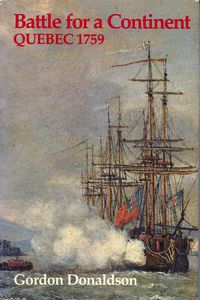  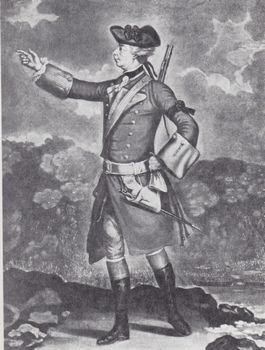 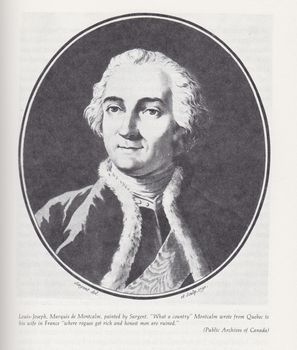 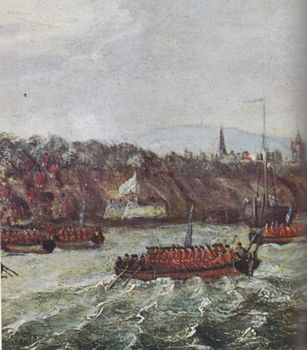 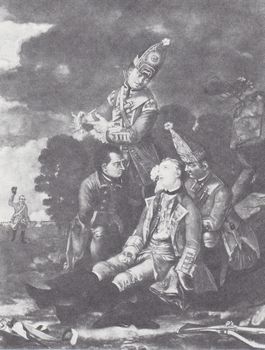 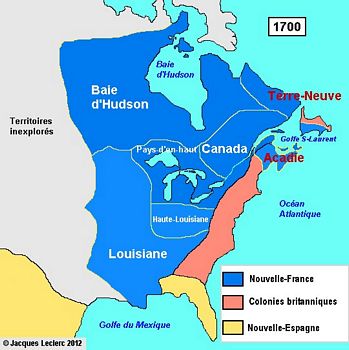 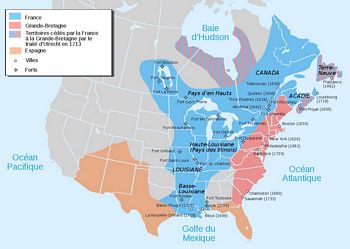 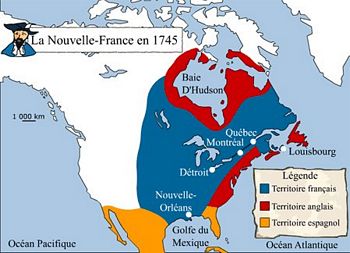 |
Copyright 2008 - 2025 G. Rudolf
